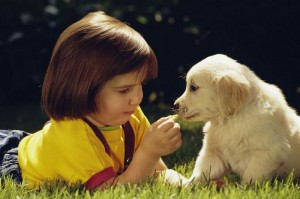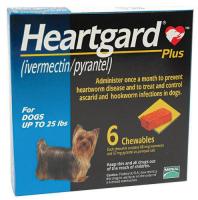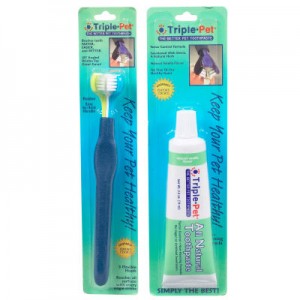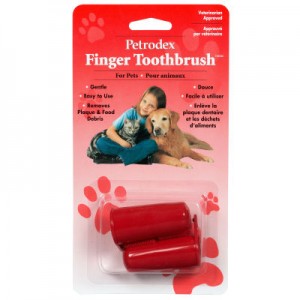Your Dog and Winter
- Posted by puppy love on October 12th, 2008 filed in dog weather
- Comment now »

Living in sunny Southern California, my dog and I might be spoiled by the good weather. But that doesn’t mean it’s not just as important for us to prepare for the winter chill!
This is especially critical if your dog sleeps outside the house. If your dog has a doggy house, then make sure you pack it with extra thick and warm blankets. For the winter months, orient the dog house with the entrance facing the house, so that the wind chill won’t hit your doggie as he’s sleeping. Wind chill is deadlier than temperature! Dogs are very good at adapting to colder temperatures, especially dogs with heavy coats, but wind chill is another story. Imagine you are nice and warm in bed and someone runs by and throws a glass of cold water on you! That’s similar to what wind chill is like for your dog.
I am not a fan of dressing up dogs with costumes, but in the winter a nice snug sweater for your dog might be just what it needs to keep warm, especially during walks.
One last thing that often goes unnoticed; the salt and other chemicals used to melt snow and ice can irritate the pads of your pet’s feet. Wipe the feet with a damp towel before your pet licks them and irritates his/her mouth.
Too Many Treats!
- Posted by puppy love on October 11th, 2008 filed in dog treats
- Comment now »

Today we are going to talk about a sticky situation that while seemingly innocent, can actually lead to discipline problems and even health problems for your poor dog down the line if not handled with discipline: DOGGY TREATS! :o)
Now we all know how hard it is to resist giving your pooch treats when he’s begging for one or being good. But giving too many treats to your dog can be one of the worst things you can do for them! First of all, over feeding your dog with treats can lead to them getting fat and unhealthy. This can be worse when the treats you give your dog are high in fat. In general, a good nutritious base treat like Milk Bone biscuits are better for your dog. Avoid giving them high sodium salted treats, and especially avoid giving them people food! Bones are a different story, but I had a friend who would give his dog barbecued ribs smothered in honey and barbecue sauce!
A more subtle danger when “over treating” dogs is that they will come to depend on getting treats as positive reinforcement. The dog should not be obedient because he wants a treat; he should be obedient because he respects you as the master and loves to obey you! Treats are just a bonus. Be especially careful with how your kids dole out treats, because kids will often sneak them food and treats in an attempt to get the dog to love them more. This results in undisciplined, begging dogs!
Your puppy and small children: Part 2
- Posted by puppy love on October 10th, 2008 filed in dog training, new puppy, pawnme.com
- Comment now »

I decided that integrating your puppy into a household with small children deserved its own series of posts, as it is probably the most important issue for those with small children.
One thing that can cause a lot of problems, injuries and bad feelings is when dogs jump on children. Dogs grow quickly and their bodies grow much faster than their maturity and obedience levels! One problem this leads to is large puppies jumping on children and mounting them, which can cause fear and injury to the child. I remember when I sat down next to my German shepherd puppy who was growing fast and she ended up standing on top of me pinning me to the ground! I had to scream to my parents for help. It was very embarrassing. 🙁
The thing to remember with all dog training is that you have to get to them early. Even though a small jumping puppy may seem harmless and even cute, you have to think of the consequences when they are older and larger. Even small dogs who jump can be bothersome and destructive; having friends leave with muddy pawprints on their pants is very awkward. Think of it this way: if it’s behavior you don’t want your dog to be doing as an adult, then don’t allow them to do it as a puppy.
Aside from constantly reinforcing that jumping is not allowed with a stern “no jumping!” command, teach your small children to approach the dog from the front, such as stooping to stroke their chest or pat them. Have them avoid reaching their hands down to the dog’s head, because having hands hang over the dog will encourage him to jump!
Next time: Discipline and doggy treats!
New Puppy… what to expect part 2: Your puppy and small children
- Posted by puppy love on October 9th, 2008 filed in new puppy
- Comment now »
Making sure your new family member joining the household in a smooth transition will actually require two different training processes: one for your puppy and one for your child!
Your child needs to learn that the puppy is NOT a toy! Small children can tend to pull on dogs ears and poke their fingers in sensitive areas such as the ear, nose and even the eyes of dogs. It is important to approach and introduce your child to the dog in a respectful way, so from the beginning they treat the dog as a distinct member of the family and not a play thing that they own. For very young children (under 4), it might be a better idea to keep them seperate for the safety of both the child and the pup.
Something that I do not agree with is having children actively participate in the early stages of disciplining the dog. While it is important that the dog realize that in the pecking order of the household they are a step below the children, it is better for them to recognize you as the main figure of authority, that is, the alpha. It is more effective for you to set the rules and training habits and then, as the dog becomes acclimated to you as the alpha, have your children imitate your routines and commands so the dog gradually comes to look at them as figures of authority, while still keeping you in mind as the master.
Next time we’ll talk more about children and new puppies, including setting limits on play habits and how to prevent the dogs from jumping on top of your small children!
New Puppy… what to expect?
- Posted by puppy love on October 7th, 2008 filed in dog illnesses, new puppy
- Comment now »
While some families opt for cats or birds, the most popular pet remains the family dog. Not only are dogs extremely loyal to those who shower them with love and attention but the majority of breeds are great with children and which allows an entire family to form a lasting bond with the pet.
Though bringing a new puppy into the home brings many positives along with it, any family considering adopting such an animal must also be prepared to deal with such things as puppy illness. Though it is not common, occasionally a family may be forced into a situation where there is a need to devote a large amount of money and attention to the health of their pet. This is especially taxing on those families who have never owned a pet or make hasty decisions when dealing with puppy adoption.
The adoption of a family’s first puppy is a process that’s normally filled with excitement and anticipation though on occasion a dog illness develops and the family is thrown for a loop. Having never owned a pet prior to their newest puppy, families usually scurry for answers surrounding dog illnesses in hopes that they can provide their new family member with the care they need. The internet is generally the first place new pet owners turn when in need of information which generally yields helpful results when searching for “my puppy is sick” or “what to do when your puppy is sick”.
Results typically suggest that owners monitor the dog’s behavior and demeanor. Much like people, dogs become sluggish or less energetic when they become ill. Other results suggest that a family suspect of illness keep a close eye on their puppy’s eating habits as lose of appetite might indicate a serious illness. Results for more serious problems advise owners to perform physical checks on the dog to determine if a puppy is sick. Physical checks might involve looking into the ears and eyes of a puppy as well as its paws as each is capable of revealing serious health issues. In more extreme cases owners of a puppy are advised to check the dog’s urine for blood or for the frequency at which the puppy uses the bathroom.
While all of these results offer fantastic advice the number one result, not surprisingly was to seek the advice and care of a Veterinarian. When you believe your puppy may be ill there’s no substitute for professional care. The majority of Veterinarian’s will be able to determine the cause of puppy illness with relative ease and recommend treatment without the need for addition testing. A family who believes that their puppy is sick should seek advice from a pet doctor before making any decisions regarding the care of its newest family member.
RE-CAP ON HEARTGUARD!
- Posted by puppy love on June 10th, 2008 filed in pawnme.com
- Comment now »
Hey all! I’ve received several comments regarding heartguard.
I never said EVERYONE HAS to use it… I just suggested. Please keep clear that these articles I write are only for peoples entertainment and I did state my disclosures saying I am not a responsible for any of your actions. I am not a vet, I just have a passion for animals and do a ton of research, and which I like to share my information I learn with others.
One comment was: Nonsense, dogs who live out in the wild still need heartguard?
That is a silly comment really! WHAT WILD ANIMAL would really go to a vet? That is really silly of you to even ask me!! or even state as a comment! I’m writing about and speaking for dogs who LIVE at HOME with PEOPLE!
Second comment was: Where to purchase heartguard; you must go take a bloodtest first for your dog before getting any medications or even non-over the counter stuff. Why? Because what if they are sick and you just don’t know it. You want your dog to be clear of everything before starting them on any medication/nutrients.
=)
Thanks for coming by!
HeartGuard For Dogs
- Posted by puppy love on June 3rd, 2008 filed in dog vitamins & protection
- Comment now »
Do you know what can happen without HeartGuard?
Since I’ve adopted Bambi into our family since he was at 2 months, I have fed him HeartGuard.
It is vet recommended, actually should be required! But you cannot get heartguard off the counter from your local pet shop, you must have a full blood test done for your pup even adult dogs and they will provide you the right one for his/her size. Blood tests should always come out negative for everything before the vet gives you a prescription for heartguard.
Yes, only it will run a lot cheaper, but you should not and really DO NOT want to feed your dog heartguard without knowing if he/she has any problems with their health. Heartguard comes in different color boxes for different size and aged dogs.
Here’s the one I feed my Bambi, but as I said, all dogs are different so you might have a different box.
You feed them once a month, they actually have stickers that you put on the back of the box for the month that you have fed it to them. It has a flavor that your dog will love and will eat as a treat. It is possible that your dog will have a hard time eating or even chewing on it since it is about almost an inch long so you might want to break it apart into 3-4 small pieces. The best way to feed them heartguard is to put it in their food bowl or just simply feed it to them as a rewarded treat once a month.
So there you go, heartguard, it protects them against the following article portion I found:
For use in dogs to prevent canine heartworm disease by eliminating the tissue stage of heartworm larvae (Dirofilaria immitis) for a month (30 days) after infection and for the treatment and control of roundworms (Toxocara canis, Toxocaris leonina) and hookworms (Ancyclostoma caninum, Uncinaria storocepala, Ansylostoma braziliense).
So I HIGHLY recommend that you get blood work done as soon as possible and ask the vet about heartguard. =) Take cares everyone! See you guys back all soon! Good night~ Time for bed =P
DOG FOOD, DOG TREATS, DOGS TEETH and HEALTH~
- Posted by puppy love on May 23rd, 2008 filed in dog food
- Comment now »
Hey all! SO SORRY I’VE MISSED EVERYONE FOR SEVERAL DAYS NOW! A lot has happened, so many people passing away… but this shouldn’t be any excuse for me not being able to write to everyone!
My apologies, always things happen and you know I REALLY WISH! that I could just make dogs my #1 priority to write about, learn about, and teach about… unfortunately this dumb thing called MONEY! green pieces of paper revolves around us.
So anywho, today I wanted to recap everyone on dogs and their foods, treats, eating habits, and much more. So my Bambi officially turned 1 year old so I had to switch him to eating puppy food to adult food. I know I said “Royal Canine” was great to feed your pups, but you know they are extremely pricey for the little amount that they provide to you. If you are rich and can afford it, it’s awesome! But I don’t get to walk in the hall of “RICH” everyday so I prefer to stick to nutro ultra. I got the small breed kind because Bambi is only 7 pounds fully grown. Cute huh? =)
So moving on with dog treats, I found some more healthy treats for your dog, I mentioned Nyla-bones right? They are an excellent source of “teeth cleaning” for your dog. It may not reduce bad breath, and trust me, it doesn’t, but! it decreases plaque and icky stuff on your pups teeth. Once your pups teeth start turning YELLOW, that means you must brush them, clean them, rinse their mouth. How you may ask? There are toothpastes and toothbrushes for dogs for different sized dogs. Bambi as you know is petite so I buy the smallest brush they have as well as soft because since he is a smaller breed, his gums are a lot more sensitive than larger breeds. So I will upload a picture of the toothbrush and toothpaste I purchased for him =) Just a reminder, the first picture are for medium bred dogs and the second picture are for the smaller breeds under 20lbs.
The second picture in the red coloring is a special toothbrush made for smaller breds only because you can put the toothbrush onto one of your fingers and gentley brush away without harming your dog. Now, please keep in mind, bleeding of the gums isn’t bad but just like us humans, it does hurt for them as well so try not to brush so hard and brush one direction not two because that WILL cause the gums to bleed.
Now, I will shortly post some new interesting and fun posts! Hope to see you all back soon! Give hugs and kisses to your adorable babies!
Until later~ ….. =)
Feeding Chicken Bones to Dogs
- Posted by puppy love on May 17th, 2008 filed in dog food
- Comment now »
I’m not sure if everyone knows about dog and chicken bones! I suggest that you do not feed them chicken bones! At least give them as treats once in a LONG while. But of course every dog’s body is different. Do not feed chicken bones too often. Yes, its a common misconception that Dogs CAN eat chicken bones since they can handle the bones in their digestive systems or what not, but it is not safe! The bones can be sharp and can ruin their stomach or worse dogs can choke on them. I have seen many cases where dogs choke on chicken bones and have seen many medical problems with dogs that eat a lot of chicken bones! Some say that it is safe for them to eat, but I suggest feeding them larger bones such as beef bones.
Here are some nice chicken bone alternatives:
Greenies – My bambi loves them and greenies are good for dogs teeth
Nylabone – If your dog must have chicken and is spoiled, here’s a good alternative. They have Nylabone chicken flavored. Theyre chicken flavored nylabone that your dog would absolutely love!
And of course the good old chew toy, and larger beef bones for dogs =)
Well, that’s it for today. Have a great Night! or Morning!
Dogs With Anxiety, Anxious Dogs, and Distressed Dogs.
- Posted by puppy love on May 13th, 2008 filed in dog behavior
- Comment now »
Hi there!
LONG TIME NO SEE EVERYONE! I MISSED EVERYONE! =)
I’ve been trying to look for a second job and it’s been hard.. running around in circles!
Anyway, so let me tell you some stuff that I know from experience with dogs that have anxiety.
YES, dogs can have anxiety too just like us humans! =P
They have feelings just like us too, a heart like us.. and you get the flow.
So, I’ve noticed… a couple of dogs that I have played with and been around from my neighbors homes and so on.. Some dogs seem to stick their tongues out and start to pant even when it’s a neutral temperature. You may think that your dog is panting due to the temperature or running around. Actually, if it’s either of those above, your dog may have anxiety. Anxiety can be caused literately by anything.
1. Home – his/her surroundings of furniture(too cluttered and messy), noise(children if they are not good with them and some dogs are just not ment to be around children), bedding(they might not have a comfortable bed), owners!(the owners may be abusive or even just lack in attention).
2. Food – not enough nutrition(lacking a ton of vitamins and such), water(may not be cleaned everyday or just dirty unfiltered water), and treats(either too many or none at all).
3. Just themself – they may just be born with a chemical imbalance(please check with their vet).
You know, honestly it can be anything but those are 3 top reasons why a dog may be distressed and anxious. Honestly, if you try all the things above that I have stated, I really do not know what to tell you. I’m not an EXPERT but I just like to suggest things that may work. Usually 95% of the people who read my posts tell me that I’ve been helpful and the rest of the 5% tell me nothing.
So I appreciate all of you stopping by! Next post will be about EASY GROOMING AGAIN! I FOUND TECHNIQUES AND SUPPLIES!!!!!! YAY!!!!!!
See you all back soon! =)


